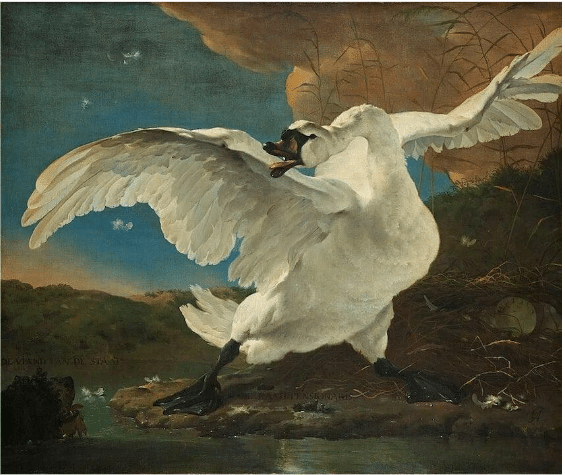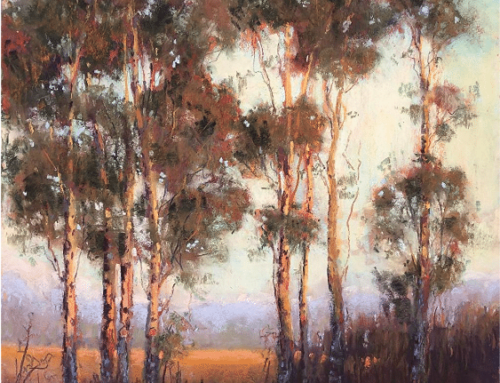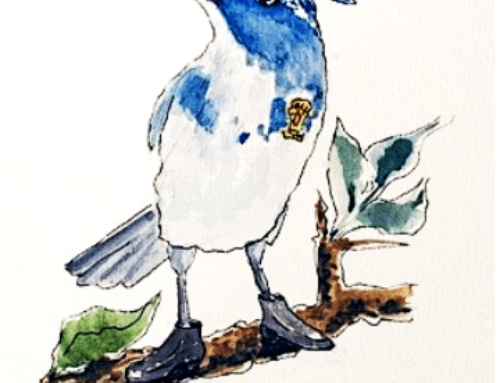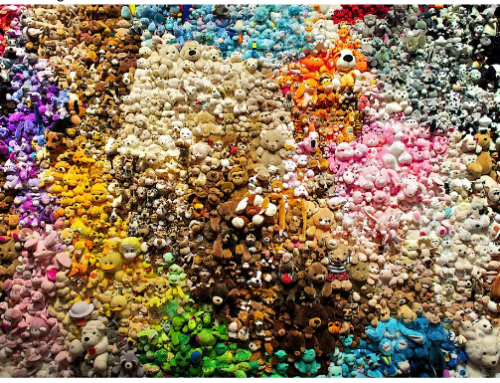“Paint the flying spirit of the bird rather than its feathers.”
-Robert Henri
Can you combine rule-breaking wildness with a disciplined and authentic expression of the search for meaning?
A chorus of frustrated painters’ voices swells and ascends to the ears of Apollo the Patron God of Painting, who leans over only to hear them crying out, as with a single voice:
JUST HELP ME LOOSEN UP!
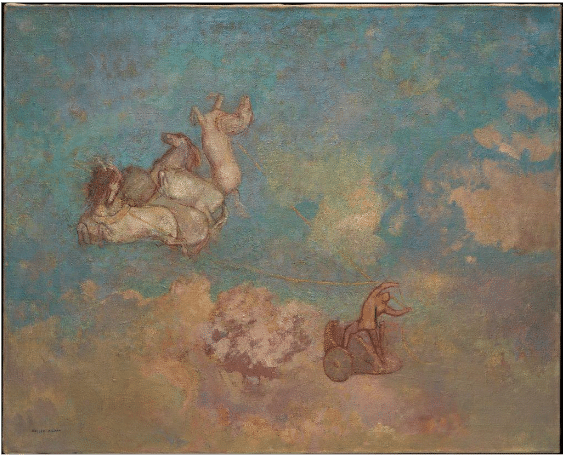
Odilon Redon, The Chariot of Apollo, 1905-06
Well, what’s so great about painting loose rather than tight? Nothing really. Perhaps we tend to associate looser painting with freedom, confidence, or a sort of state of grace in which the artist lets go of conscious technique and seemingly effortlessly handles the paint as a pure instrument of feeling – something so rarely spotted in the wild that it’s probably a myth.
People think of Sargent this way, but it’s worth remembering that Sargent’s bold, “bravura,” brushstrokes were often made toward the end of the painting, after days of laboriously “getting it right” in front of his sitter. He was tight where he needed to be. The big brush marks were a conscious last step of extravagantly icing the cake. It’s documented, and the same is true of his Spanish counterpart, Joaquin Sorolla.
It’s true that “tight” painting can look clunky, crowded, claustrophobic, cacophonous, cramped, and any number of other words beginning with “c” that suggest too much work has gone into it. Again, there’s absolutely nothing wrong with good tight, realistic painting.
But overworking is different. Overworking is really what beginners mean by not painting loosely enough, and it’s one of the top problems developing painters face. It’s caused by two related things:
1. not having enough confidence – that is, meticulously going over a single portion of the painting, desperately trying to get it to “look right.” Antitdote: keep your eye on the big picture.
2. not seeing the big picture clearly enough to begin with – meaning, not just the composition but the overall impression your viewer will get from the work. This is something too rarely considered. Emotive art uses paint to convey a ideas and feeling about the world.
Throughout the many twists, turns, exultations and pitfalls of simply making a painting – any painting! – it’s difficult to keep in front of your mind the spirit of the thing, the initial idea, the life of the thing, the overall feeling or “vibe” you want the work to transmit to the viewer. But without feeling and artistic vision, even technically perfect work falls flat.
“Don’t just paint it, paint it doing something.” – Charles Hawthorne
“There is a vast difference between a drawing aimed at recording an instant in the life of an alert organism and one aimed at showing how light falls on a stuffed specimen,” so says George Kirsch Sutton of the Wilson Ornithological Society. “A Bruno Liljefors would fully understand what I have just tried to say; so would a Jan Vermeer.”
Bruno Liljefors was Sweden’s most influential wildlife painter during both the 1800s and 1900s. His depiction of animals, particularly his famous bird paintings, remain timeless and influential to this day. His work was tirelessly accurate, and yet his details are just enough to convey both specificity and form, as well as action, movement and striking color.
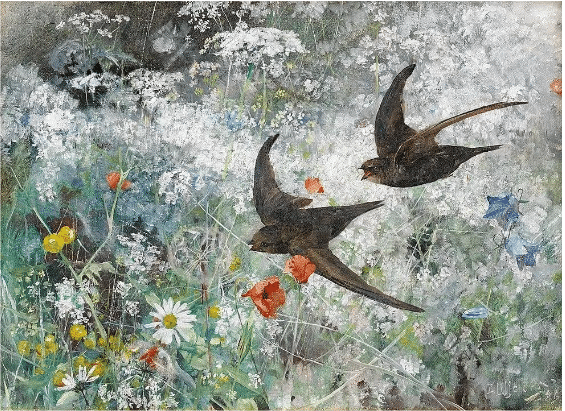
Bruno Liljefors, Common Swifts, 188
In Common Swifts (1886), Liljefors gives us super accurate representations of the birds and the wildflowers (it would be possible to identify each species he paints), and yet in each case the details are “just enough.” The overall painting is wild, dense, and arresting, but somehow the details are all minimally rendered (you don’t see actually see any feathers on the bird or all that many petals on the flowers – the poppies or all that foamy Queen Anne’s Lace – except for that one daisy). This artist became famous for bringing wildlife painting beyond the domain of science and into an art in its own right. How? He kept the big picture in mind.
He didn’t just “faithfully” paint birds, animals and flowers, he painted them doing something. He brought them to life by investing them with motion and a feeling for their life and growth in the wild.
The two pitfalls mentioned above – forgetting the big picture and getting distracted and lost in details – are the enemies of loose painting. Arguably both come down to confidence.
So how do you gain the confidence to loosen up?
- Unwelcome answer: paint a lot of paintings. Attend classes and workshops and challenge yourself by entering competitions, online and off. Paint, paint, paint.
- Tricky/controversial answer: force yourself to pay more attention to the overall feeling or idea your painting will convey than you do to any one part of it.
It’s not about abstraction vs. realism, it’s about what the artist gets into the work. The expression of a state of mind or feeling-idea is separate from the degree of, on the one hand, faithful or skillful representation, and on the other, non-representational abstraction. Technique is just technique. You can have loose, abstract paintings that don’t convey much feeling, just as you can have tight, minutely detailed ones that do, and vice versa in the form of meaningful abstraction and empty realism.
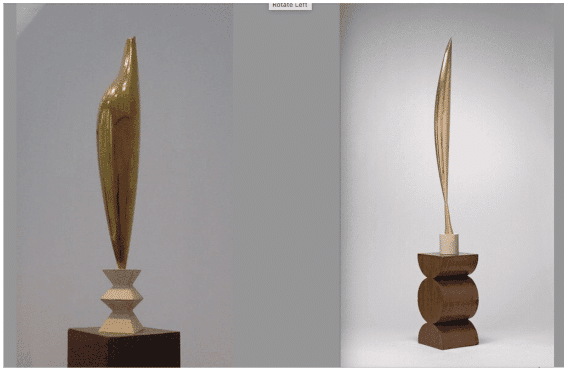
“The Flying Spirit of the Bird”: two sculptures by Brancusi with increasing abstraction, from “Golden Bird” on the left to “Bird in Space” on the right. Both express soaring up into the sky.
Speaking of birds, take the Romanian sculptor Brancusi. As we recently noted, Brancusi spent with 20 years on a series celebrating the theme of a bird in flight. Yet he never sculpted the bird; he concentrated on the animal’s movement, rather than its physical attributes.
Though considered by some an abstract artist, Brancusi didn’t intend to make challenging or puzzling art. He abstracted (simplified) the figure (the bird in flight) to express it poetically, as a relatable experience.
The key is recognizing and prioritizing the work’s overall concept or feeling-idea, doing what it takes to bring it out, and adding details only until they start to detract from the overall feeling.
You may or may not know the “feeling-idea” of a painting when you begin it. Often you find it halfway through – a sudden idea for what you might be able to do for the viewer. For many paintings, the more training and practice you get, the better your chances of conveying that overall vibe. But remember the old adage too: a painter truly committed to putting skill at the service of feeling, someone like Rembrandt, could paint a masterpiece left-handed given a toothbrush and a tin of shoe polish.
It all comes down to the balance of form and feeling.
“You have to know the rules in order to break them,” they say. I think you have to internalize the rules you need in order to most simply and powerfully express what your heart and soul wants you to say. Either way, the only way is to expose yourself to those rules.
If your painting could benefit from immersion in the time-tested principles of design and composition, check out some of these professional high-quality tutorial videos.

